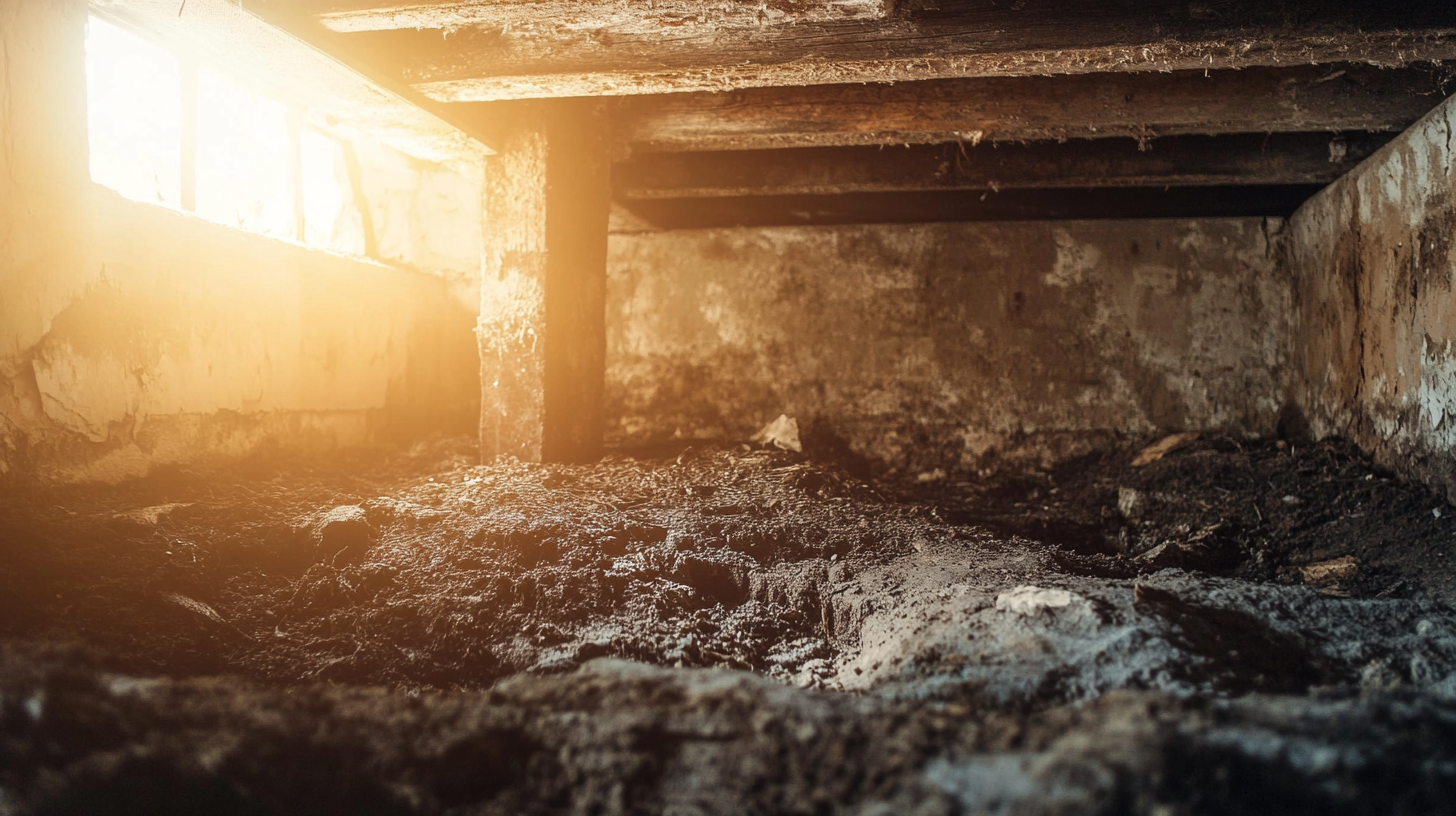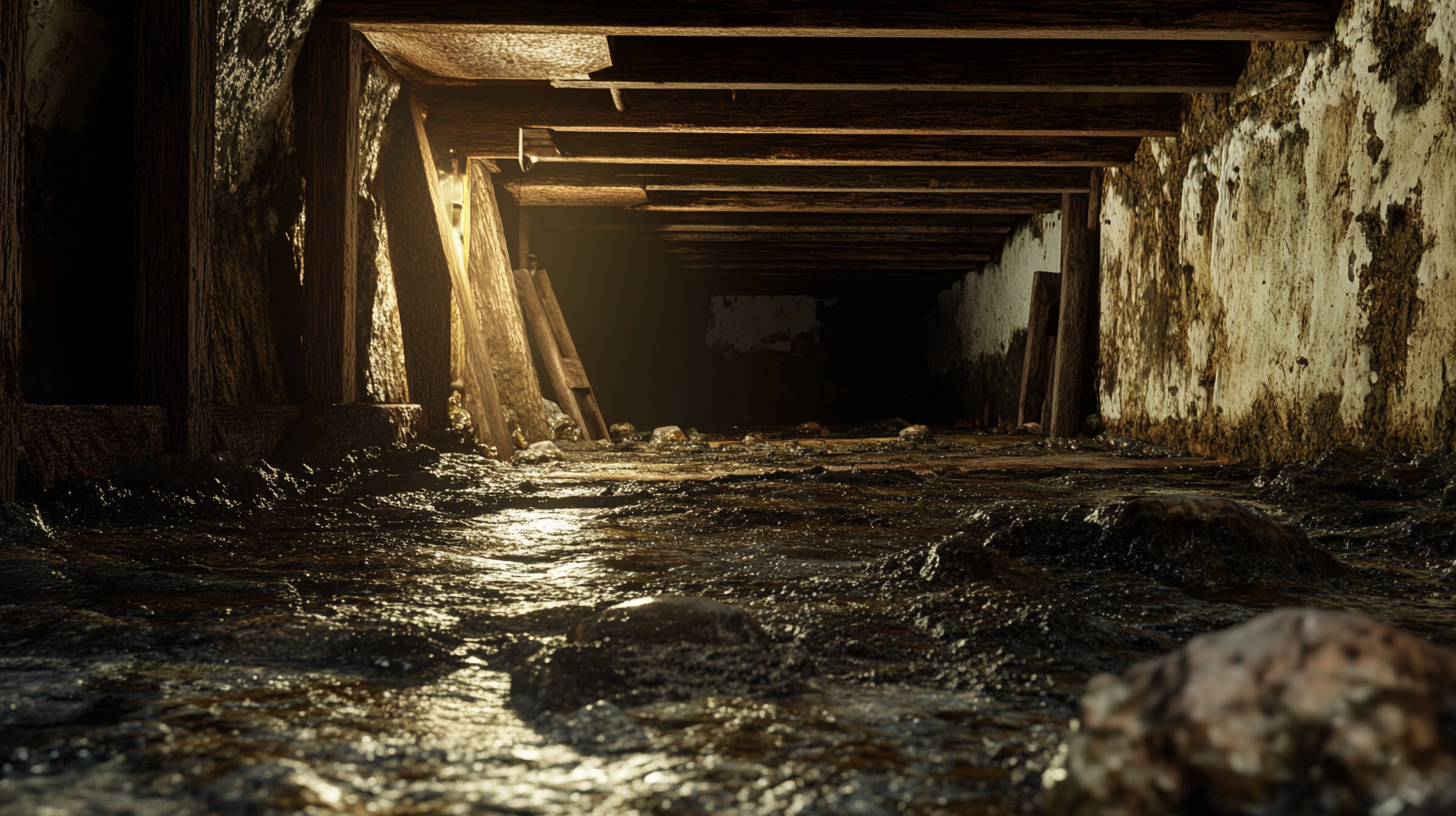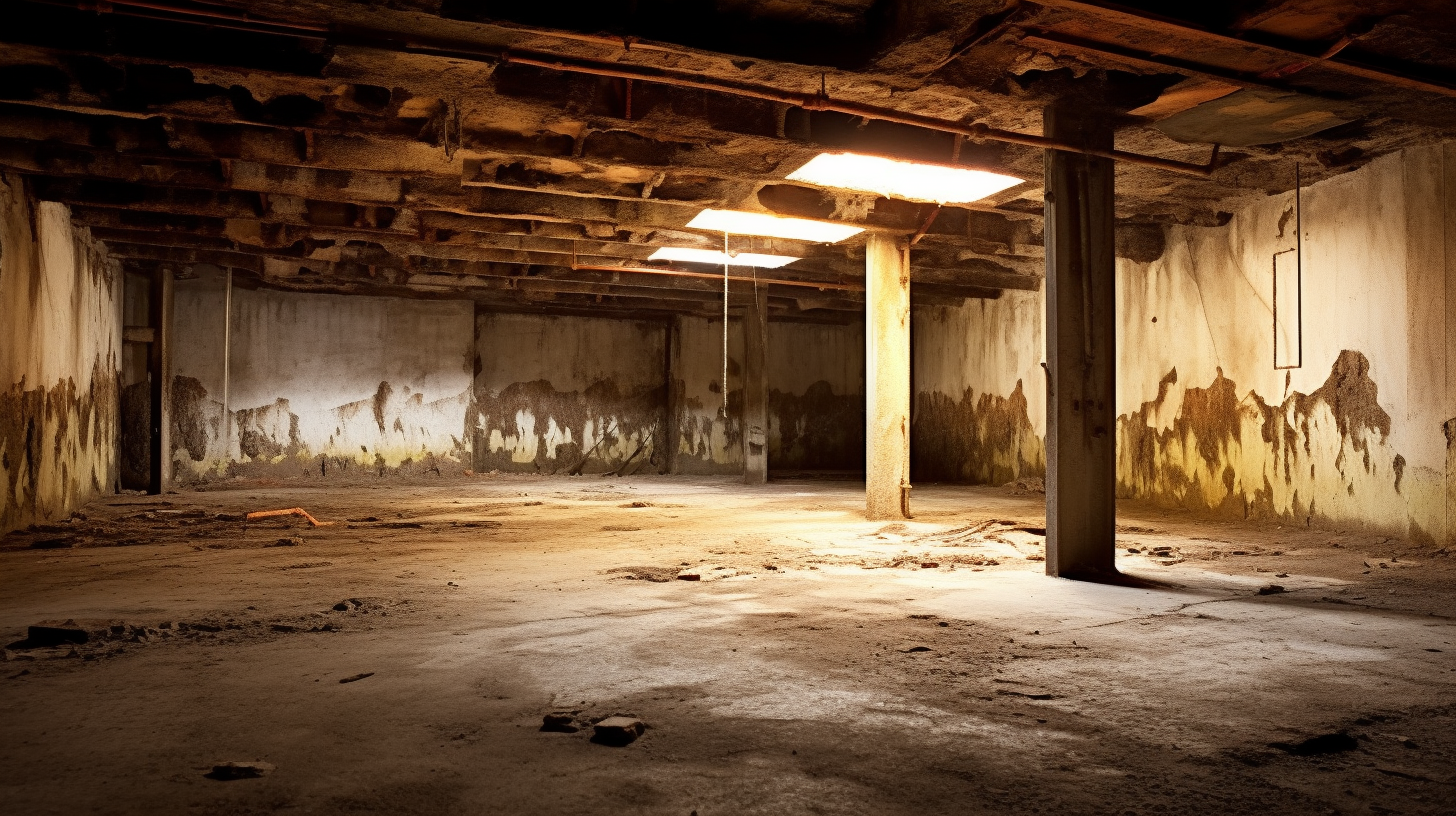Now IS THe Time To...

Crawl Space Services In Knoxville, TN
Stetson Howard: 865-432-6743
CRAWL SPACE ENCAPSULATION, REPAIR, WATERPROOFING & MOLD REMOVAL
No-Obligation, Free Inspections
No-Obligation Free Estimates
We Warranty All of Our Work
100% Satisfaction Guaranteed
In the ever-evolving field of construction, foundation repair stands as a critical aspect that demands constant innovation. The integration of advanced technologies into foundation repair techniques not only enhances efficiency but also ensures long-term stability and safety of structures. Adhering to established guidelines and principles, the adoption of innovative technologies is pivotal in addressing the challenges associated with traditional methods.
Innovative technologies in foundation repair encompass a broad spectrum of advancements, ranging from the use of sophisticated diagnostic tools to the application of high-performance materials. These technologies facilitate precise identification of foundation issues, enabling targeted interventions that mitigate further damage. For instance, modern diagnostic equipment such as ground-penetrating radar and thermal imaging provide detailed insights into sub-surface conditions, allowing for accurate assessment and planning.
Furthermore, the implementation of new materials and methods, such as carbon fiber reinforcements and polyurethane foam injections, offer superior solutions compared to conventional techniques. These materials are not only more durable but also less invasive, reducing the time and cost associated with foundation repairs. By leveraging these innovations, contractors can enhance the longevity and resilience of foundations, thereby safeguarding buildings against future settlement or cracking.
The principles outlined in the foundational guidelines stress the importance of adopting a forward-thinking approach in construction practices. Embracing technological advancements is a testament to this principle, driving progress and fostering a culture of continuous improvement. In conclusion, the role of innovative technologies in foundation repair is indispensable, providing robust and reliable solutions that align with the overarching goals of safety, efficiency, and sustainability in the construction industry.
Traditional Foundation Repair Methods
Overview of Conventional Techniques
Foundation repair is a critical aspect of maintaining structural integrity. Traditional methods, while effective to some extent, have been the cornerstone of foundation repair for many years. These conventional techniques include underpinning, slabjacking, and piling, each with its distinct processes and applications.
Description of Traditional Methods
Underpinning: This method involves strengthening and stabilizing the foundation of an existing building. It typically requires excavating sections beneath the foundation and pouring concrete to create a new support system. This process can be labor-intensive and time-consuming, but it provides a solid base for structures that have suffered from settlement issues.
Slabjacking: Also known as mudjacking, this technique is used to lift sunken concrete slabs by injecting a grout mixture through holes drilled in the concrete. The grout fills voids beneath the slab and raises it back to its original level. Slabjacking is often used for driveways, sidewalks, and other slab-on-grade structures.
Piling: Piling involves driving long steel, concrete, or wooden posts into the ground to support a structure. This method is particularly useful in areas with unstable soil conditions. Piles transfer the building load to deeper, more stable soil layers or bedrock, ensuring a firm foundation.
Limitations and Challenges
While traditional foundation repair methods have been reliable, they are not without their limitations and challenges:
- Cost and Labor-Intensive: Techniques like underpinning require significant manual labor and time, leading to higher costs. The excavation and concrete pouring processes are disruptive and can take weeks to complete.
- Invasiveness: Many traditional methods involve substantial disruption to the existing structure and landscape. For example, underpinning requires digging around and beneath the foundation, which can disturb the surrounding areas.
- Limited Effectiveness in Certain Conditions: Methods like slabjacking may not be suitable for all soil types or for addressing severe foundational issues. The injected grout can sometimes fail to provide a permanent solution if the underlying soil continues to shift.
- Environmental Impact: Traditional techniques often involve extensive use of materials like concrete, which have a significant carbon footprint. The excavation processes can also lead to soil erosion and other environmental disturbances.
- Long-Term Reliability: While piling provides a strong support system, it may not always account for future soil movement or other geological changes, potentially leading to future foundation issues.
In conclusion, traditional foundation repair methods such as underpinning, slabjacking, and piling have been essential in maintaining the structural integrity of buildings. However, the limitations and challenges associated with these methods underscore the need for innovative technologies that can provide more efficient, less invasive, and environmentally friendly solutions.
Emerging Technologies in Foundation Repair
Hydraulic Lift Systems
How Hydraulic Lift Systems Work Hydraulic lift systems represent a significant advancement in foundation repair technology. These systems use hydraulic jacks to lift and stabilize foundations. The process involves inserting hydraulic jacks at strategic points under the foundation, which are then synchronized to lift the structure evenly and precisely. This technology is particularly useful for correcting uneven settlements and providing a stable base for the building.
Benefits of Hydraulic Lift Systems Hydraulic lift systems offer several advantages:
- Precision and Control: The hydraulic jacks can be finely adjusted, allowing for precise lifting of the foundation. This ensures that the structure is brought back to its original level without causing additional stress or damage.
- Reduced Risk of Structural Damage: The controlled and uniform lifting process minimizes the risk of cracking or further damaging the building during repairs, providing a safer and more reliable solution compared to traditional methods.
Polyurethane Foam Injection
Mechanism of Polyurethane Foam Injection Polyurethane foam injection is a modern technique used to stabilize and lift foundations. The process involves drilling small holes into the affected area and injecting a specialized polyurethane foam. The foam expands, filling voids and compacting loose soil, thereby raising and stabilizing the foundation.
Advantages Over Traditional Methods
- Quick Application and Minimal Disruption: The injection process is relatively quick and causes minimal disruption to the property. Unlike traditional methods that require extensive excavation, polyurethane foam injection is less invasive.
- Lightweight and Durable Material: The foam is lightweight yet durable, providing long-lasting support without adding significant weight to the underlying soil. Its expanding nature ensures that all voids and gaps are effectively filled.
Carbon Fiber Reinforcement
Use of Carbon Fiber in Foundation Repair Carbon fiber reinforcement involves applying carbon fiber strips or sheets to areas of the foundation that need strengthening. These materials are bonded to the surface using high-strength epoxy adhesives, providing additional support and resistance to movement.
Benefits of Carbon Fiber Reinforcement
- High Strength-to-Weight Ratio: Carbon fiber is incredibly strong yet lightweight, making it ideal for reinforcing foundations without adding excessive weight. This property helps in maintaining the structural integrity of the building.
- Non-invasive Method: This technique requires less excavation compared to traditional methods, reducing the overall disruption to the property. The application process is relatively quick and straightforward, making it an efficient solution for foundation repairs.
Smart Sensors and Monitoring Systems
Introduction to Smart Foundation Technologies Smart sensors and monitoring systems are at the forefront of foundation repair technologies. These systems involve integrating sensors into the foundation to provide real-time data on its stability and condition. This technology allows for continuous monitoring and early detection of potential issues.
Impact on Maintenance and Repair
- Early Detection of Foundation Issues: Smart sensors can detect changes in the foundation’s condition early on, allowing for timely interventions before minor issues escalate into major problems.
- Data-Driven Decisions for Timely Interventions: The data collected by these sensors enable property owners and engineers to make informed decisions regarding maintenance and repairs, ensuring that interventions are timely and effective.
In conclusion, the adoption of emerging technologies in foundation repair is transforming the industry. Hydraulic lift systems, polyurethane foam injection, carbon fiber reinforcement, and smart sensors offer innovative solutions that enhance the efficiency, safety, and reliability of foundation repairs .
Case Studies of Innovative Foundation Repair
Case Study 1: Hydraulic Lift System in Urban Buildings
Project Overview and Challenges An urban building located in a densely populated area experienced significant foundation settlement due to suboptimal soil conditions and nearby construction activities. The primary challenge was to stabilize the building without causing major disruptions to the occupants and surrounding infrastructure. Traditional methods were deemed too invasive and time-consuming for this environment.
Implementation and Results The chosen solution was the implementation of a hydraulic lift system. Hydraulic jacks were strategically placed and synchronized to lift and stabilize the foundation. The process involved careful planning and execution to ensure precision and safety. The hydraulic lift system allowed for the foundation to be raised gradually, minimizing stress on the structure.
Successful Stabilization and Minimal Downtime The results were highly successful. The building was stabilized effectively, and the foundation was restored to its original level. The use of hydraulic lift systems ensured that the project was completed with minimal downtime, causing little to no disruption to the building's occupants. The innovative approach demonstrated how modern technology could solve complex urban foundation issues efficiently.
Case Study 2: Polyurethane Foam Injection in Residential Homes
Project Scope and Initial Issues A residential neighborhood faced widespread foundation problems due to soil erosion and poor initial construction practices. Several homes exhibited signs of foundation settlement, including cracks in walls and uneven floors. Traditional repair methods were considered, but homeowners preferred a less disruptive and quicker solution.
Outcomes and Long-term Benefits Polyurethane foam injection was selected as the optimal solution. Small holes were drilled into the affected areas, and a specialized polyurethane foam was injected. The foam expanded, filling voids and compacting loose soil, thereby lifting and stabilizing the foundations.
Enhanced Structural Integrity and Customer Satisfaction The outcomes were highly favorable. The polyurethane foam injection process was completed swiftly, with minimal disruption to the homeowners. The long-term benefits included enhanced structural integrity and increased satisfaction among residents. The lightweight and durable nature of the foam provided lasting support, ensuring that the homes remained stable and secure.
These case studies illustrate the significant advantages of adopting innovative technologies in foundation repair. Hydraulic lift systems and polyurethane foam injection offer effective, efficient, and minimally invasive solutions to complex foundation problems, highlighting the importance of modern advancements in maintaining structural integrity.
Benefits of Adopting Innovative Technologies
Cost Efficiency
Long-term Savings Innovative foundation repair technologies offer substantial long-term savings. By employing advanced methods such as hydraulic lift systems and polyurethane foam injection, the frequency of repairs can be significantly reduced. These technologies address the root causes of foundation issues more effectively than traditional methods, thereby minimizing the likelihood of recurrent problems.
Reduced Need for Frequent Repairs With the precision and effectiveness of modern technologies, structures experience fewer foundation failures. This reduction in the need for frequent repairs translates to considerable savings over time, both in terms of money and resource allocation.
Lower Labor and Material Costs Innovative repair methods are typically less labor-intensive and require fewer materials compared to traditional techniques. For instance, polyurethane foam injection is a quick process that involves minimal excavation, reducing the amount of labor and material required. Similarly, hydraulic lift systems provide efficient stabilization with less manual intervention, cutting down on overall repair costs.
Environmental Impact
Eco-friendly Solutions Modern foundation repair technologies prioritize eco-friendly solutions. The use of sustainable materials and methods helps reduce the environmental footprint of construction activities. For example, polyurethane foam used in injections is often designed to be environmentally friendly, and its application process produces minimal waste.
Use of Sustainable Materials and Methods Innovative techniques often incorporate materials that are more sustainable and have a lower environmental impact. Carbon fiber reinforcement, for instance, uses materials that are not only strong and durable but also less taxing on the environment compared to traditional construction materials like concrete and steel.
Reduction in Waste and Environmental Footprint The precision of these technologies leads to less material waste. Traditional methods that involve extensive digging and concrete pouring generate significant waste, whereas advanced techniques like foam injection and carbon fiber reinforcement are more targeted and efficient, resulting in a smaller environmental footprint.
Enhanced Durability and Longevity
Extended Lifespan of Structures Innovative technologies contribute to the extended lifespan of structures. By addressing foundational issues more effectively, these technologies ensure that buildings remain stable and secure for longer periods. This extended lifespan reduces the need for future repairs and replacements, offering both economic and practical benefits.
Improved Resistance to Future Foundation Problems Advanced repair methods enhance the overall resistance of structures to future foundation problems. Techniques such as hydraulic lift systems provide a stable and durable solution that can withstand environmental stressors better than traditional methods. Polyurethane foam injection creates a solid base that resists shifting and settling.
Increased Property Value and Safety Investing in innovative foundation repair technologies can significantly increase property value. A stable and well-maintained foundation is a key factor in the overall health and safety of a building. Potential buyers are more likely to invest in properties that demonstrate advanced repair techniques, ensuring long-term safety and stability.
By adopting these innovative technologies, property owners and builders can achieve cost efficiency, reduce environmental impact, and enhance the durability and longevity of their structures, aligning with the principles of sustainable and forward-thinking construction practices.
Hydraulic Lift Systems in Foundation Repair
Technology Description
Mechanism of Hydraulic Lift Systems Hydraulic lift systems are designed to address foundation settlement issues by lifting and stabilizing structures with precision. The mechanism involves placing hydraulic jacks at strategic points beneath the foundation. These jacks are connected to a unified hydraulic system that allows for synchronized lifting. The hydraulic pressure is carefully controlled to raise the foundation evenly, preventing additional stress and damage to the structure.
Types of Hydraulic Lift Systems Used in Foundation Repair There are various types of hydraulic lift systems employed in foundation repair, each suited for different conditions and requirements:
- Single-Acting Hydraulic Jacks: These jacks are commonly used for smaller, less complex lifting tasks. They use hydraulic pressure to lift but rely on gravity to retract.
- Double-Acting Hydraulic Jacks: These are more versatile and powerful, providing hydraulic pressure for both lifting and lowering operations. They are ideal for larger, more complex projects.
- Synchronized Lifting Systems: These advanced systems involve multiple hydraulic jacks controlled by a central system, ensuring precise and uniform lifting. They are used for large structures and delicate operations where balance is crucial.
Advantages
Precision and Control One of the primary advantages of hydraulic lift systems is their precision and control. The ability to finely adjust the hydraulic pressure ensures that the foundation is lifted uniformly, reducing the risk of uneven lifting that could lead to further structural issues. This precision is particularly beneficial for large or complex buildings where maintaining structural integrity is critical.
Minimizing Structural Damage Hydraulic lift systems minimize structural damage during the repair process. Traditional methods can be invasive and disruptive, often causing additional damage to the building. In contrast, hydraulic systems allow for a more controlled lift, reducing the risk of cracks and other forms of damage that can occur with less precise methods.
Case Examples
Successful Projects Using Hydraulic Lifts
- Urban Office Building: In a bustling city center, an office building suffered from significant foundation settlement due to nearby construction activities. Implementing a synchronized hydraulic lift system allowed for precise stabilization with minimal disruption to the building's operations. The project was completed successfully, restoring the foundation and ensuring the building's stability without interrupting the daily activities of its occupants.
- Historic Landmark: A historic landmark with a settling foundation posed a unique challenge due to its age and architectural significance. Using double-acting hydraulic jacks, engineers were able to carefully lift and stabilize the foundation while preserving the building's structural integrity and aesthetic value. The use of hydraulic lift systems ensured that the landmark remained intact and secure for future generations.
- Residential Complex: In a suburban area, a residential complex faced uneven settling of its foundations, affecting multiple buildings. The implementation of single-acting hydraulic jacks provided a cost-effective and efficient solution. The foundations were lifted and stabilized, restoring the safety and habitability of the homes without the need for extensive excavation or prolonged construction periods.
These case examples illustrate the effectiveness and versatility of hydraulic lift systems in addressing a range of foundation repair challenges. Their precision, control, and ability to minimize structural damage make them a superior choice for modern foundation repair projects.
FAQs
Recent Blog Posts
Crawl Space News







